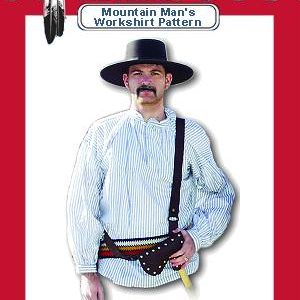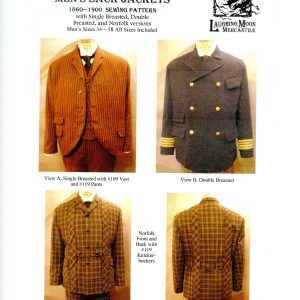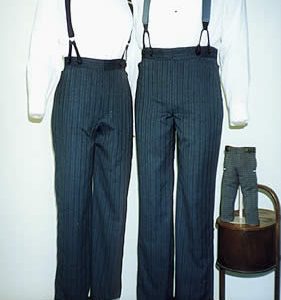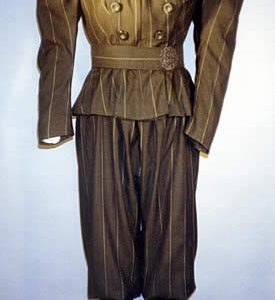$11.00
Missouri River- Adult Capote Patterns
This was standard wear for Eastern woodsmen from the French & Indian War until well after the Revolution. Includes several options for cuffs, cape and fringe treatment. Sizes M, L, XL and XXL.
2 in stock
Description
Complete pattern to sew it yourself.
This was standard wear for Eastern woodsmen from the French & Indian War until well after the Revolution. Includes several options for cuffs, cape and fringe treatment. Sizes M, L, XL and XXL.
About Your Northern Plains Capote Pattern
Called “Capote” after the French word for “hood”, blanket coats like this originated in central Canada and were probably made as early as 1675. These popular style coats are standard issue during the French and Indian War and the American Revolution and many times were made by the soldiers from issue blankets. By the mid-19th century, the popularity of the Capote had spread westward with the fur trade and it was commonly seen in use by the Indians of the Northern Plains, Rocky Mountains and Columbian Plateau. There were also many commercially made Capotes available. For instance, in 1824, a St. Louis newspaper carried an ad from an oufitter listing “Red Blanket Coats for Sale”.
Since many Capotes were “home-made”, they varied greatly in cut, style and decoration, with the Indian models being decorated with beadwork, sequins, hawk bells, binding of contrasting color, etc. Some Capotes even contained a cotton lining of calico or similar print fabric; however, most examples were hardly decorated other than having fringe at the shoulders and hood.
This practical coat is as popular with today’s Buckskinners and Indian Enthusiasts as it was in previous times. No doubt this is due to the great versatility of the garment as well as it’s colorful style. When made from a heavy Rocky Mountain Blanket, it will shed light rain or snow, can be worn over several layers of clothing in extreme cold weather and can double as an extra blanket if needed. This light, warm and comfortable Capote, complete with hood is a pleasure to own and use.
Notions & Tools
Heavy thread or simulated sinew, needle, scissors, or you may choose to use a sewing machine.
Material Requirements

Suggested Materials
The classic material choice for the Blanket Capote is the distinctive, striped blanket of the Fur Trade era. However, many other types of blankets (both striped and plain) were used to make Capotes, as well as heavy wool Tradecloth, such as Strouding or Broadcloth. Any of these types will produce a very nice Capote and our pattern allows for any adjustments necessary, depending on the size of the blanket used.
Optional Items and Trimming
4 large buttons, ribbon or cloth binding, and various other decorations can be added, such as brass shoe buttons, hawk bells, sequins, and even some beadwork such as a medallion can be added. Epaulets of cloth with beadwork instead of ribbon or binding have been observed covering the shoulder seams. Bugle beads may also be used here and on the tassles. A common decoration on the hood is a large beaded or quilled medallion that has been sewn on the top, so that it will be seen when the hood hangs down the back.

Blanket Capote History
The capote, or long greatcoat, has long been closely associated with the fur trade in North America. It is not surprising that the wide-scale harvesting of furs for European markets coincided with the development of this uniquely Canadian garment. Indeed the capotes, or more specifically the wool blankets from which they were sewn, became one of the most sought after trade items, replacing furs as the typical winter clothing for both the native and European trappers and traders alike.
Go to Article >>
Additional information
| Weight | 1 lbs |
|---|










